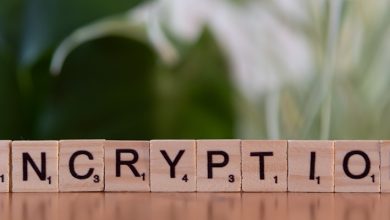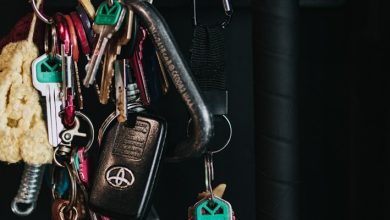How to Conduct a Security Audit of Your Crypto Assets

- Understanding the Importance of Security Audits for Crypto Assets
- Key Steps to Take Before Conducting a Security Audit of Your Crypto Assets
- Identifying Potential Vulnerabilities in Your Crypto Asset Security
- Best Practices for Securing Your Crypto Assets During an Audit
- Utilizing Tools and Resources to Enhance the Security of Your Crypto Assets
- What to Do After Completing a Security Audit of Your Crypto Assets
Understanding the Importance of Security Audits for Crypto Assets
Ensuring the security of your crypto assets is crucial in today’s digital landscape. One of the key ways to achieve this is by conducting regular security audits. These audits involve a thorough review of your asset’s security measures to identify any vulnerabilities or weaknesses that could potentially be exploited by malicious actors.
By conducting security audits, you can proactively address any security issues before they are exploited, thereby minimizing the risk of loss or theft of your crypto assets. Additionally, these audits can help you stay compliant with regulations and industry best practices, giving you peace of mind knowing that your assets are secure.
Security audits typically involve a comprehensive review of your asset’s infrastructure, codebase, and access controls. This includes analyzing the security protocols in place, identifying any potential points of failure, and testing the effectiveness of security measures through penetration testing and vulnerability assessments.
Overall, security audits play a critical role in safeguarding your crypto assets and ensuring their protection against cyber threats. It is an essential step in the management of your assets and should be conducted regularly to maintain a high level of security and peace of mind.
Key Steps to Take Before Conducting a Security Audit of Your Crypto Assets
Before conducting a security audit of your crypto assets, it is crucial to take certain key steps to ensure that your digital holdings are adequately protected. The first step is to review and update your security protocols, including two-factor authentication, strong passwords, and encryption measures. Additionally, you should consider storing your assets in a secure hardware wallet rather than keeping them on an exchange.
Next, it is essential to conduct a thorough review of your transaction history to identify any suspicious activity or unauthorized access. This can help you detect any potential security breaches and take appropriate action to mitigate any risks. Furthermore, regularly monitoring your account activity can help you stay informed about any changes in your asset balance and transaction history.
Another important step is to educate yourself about the latest security threats and best practices for protecting your crypto assets. This can help you stay ahead of potential security risks and make informed decisions about how to safeguard your digital holdings. Additionally, consider seeking advice from security experts or consulting with a professional to ensure that your security measures are up to date and effective.
In conclusion, taking these key steps before conducting a security audit of your crypto assets can help you protect your digital holdings and minimize the risk of unauthorized access or theft. By reviewing and updating your security protocols, monitoring your account activity, and staying informed about security best practices, you can strengthen the security of your crypto assets and safeguard your investments for the future.
Identifying Potential Vulnerabilities in Your Crypto Asset Security
When conducting a security audit of your crypto assets, it is crucial to identify potential vulnerabilities that could expose your assets to security risks. By understanding where weaknesses may exist in your security measures, you can take proactive steps to address them before they are exploited by malicious actors.
One way to identify vulnerabilities in your crypto asset security is to conduct a thorough review of your existing security protocols and practices. This includes examining how your assets are stored, how access to them is controlled, and how transactions are authorized. By reviewing these aspects of your security setup, you can pinpoint areas where improvements can be made to enhance the overall security of your assets.
Another important step in identifying potential vulnerabilities is to stay informed about the latest security threats and trends in the crypto space. By keeping up to date on emerging risks and vulnerabilities, you can take proactive measures to protect your assets from potential attacks. This may involve implementing additional security measures, such as multi-factor authentication or encryption, to mitigate the risk of unauthorized access to your assets.
In addition to reviewing your security protocols and staying informed about security threats, it is also important to regularly assess the security of the platforms and services you use to manage your crypto assets. This includes conducting due diligence on exchanges, wallets, and other third-party services to ensure they have robust security measures in place to protect your assets. By vetting the security of these platforms and services, you can reduce the risk of your assets being compromised due to vulnerabilities in the systems you rely on.
In conclusion, identifying potential vulnerabilities in your crypto asset security is a critical step in protecting your assets from security risks. By conducting a thorough review of your security protocols, staying informed about emerging security threats, and assessing the security of the platforms and services you use, you can strengthen the security of your assets and minimize the risk of unauthorized access or theft.
Best Practices for Securing Your Crypto Assets During an Audit
When conducting a security audit of your crypto assets, it is essential to follow best practices to ensure that your assets are secure. Here are some tips to help you secure your crypto assets during an audit:
- Use a secure wallet: Make sure to store your crypto assets in a secure wallet that uses encryption and offers features like multi-factor authentication.
- Keep your private keys safe: Your private keys are the keys to your crypto assets, so make sure to keep them secure and never share them with anyone.
- Enable two-factor authentication: Adding an extra layer of security with two-factor authentication can help prevent unauthorized access to your accounts.
- Regularly update your software: Keep your wallet and any other software related to your crypto assets up to date to protect against any vulnerabilities.
- Audit your accounts regularly: Regularly check your account activity and balances to spot any unauthorized transactions or suspicious activity.
By following these best practices, you can help ensure that your crypto assets are secure during an audit and minimize the risk of theft or loss.
Utilizing Tools and Resources to Enhance the Security of Your Crypto Assets
When it comes to safeguarding your crypto assets, utilizing tools and resources can greatly enhance the security of your investments. There are various options available to help protect your assets from potential threats and vulnerabilities. One key tool is a hardware wallet, which provides an extra layer of security by storing your private keys offline. By keeping your keys offline, you reduce the risk of them being hacked or stolen.
Another valuable resource is a password manager, which can help you create and store complex passwords for your crypto accounts. Using unique and strong passwords for each account is essential to prevent unauthorized access. Additionally, enabling two-factor authentication (2FA) adds an extra level of security by requiring a second form of verification, such as a code sent to your phone, before accessing your accounts.
Furthermore, staying informed about the latest security threats and best practices is crucial in protecting your crypto assets. Following reputable sources such as security blogs, forums, and news outlets can help you stay ahead of potential risks. Engaging with the crypto community and participating in discussions about security measures can also provide valuable insights and tips to enhance your security posture.
What to Do After Completing a Security Audit of Your Crypto Assets
After completing a security audit of your crypto assets, it is crucial to take the necessary steps to ensure the ongoing safety of your investments. Here are some recommended actions to follow:
1. **Implement Security Recommendations**: It is essential to address any vulnerabilities or weaknesses identified during the audit promptly. This may involve updating software, changing passwords, or enabling additional security features.
2. **Monitor Account Activity**: Regularly monitor the activity on your crypto accounts to detect any unauthorized access or suspicious transactions. Set up alerts for any unusual activity to be notified immediately.
3. **Backup Your Private Keys**: Ensure that you have secure backups of your private keys stored in a safe location. Losing access to your private keys could result in losing access to your crypto assets permanently.
4. **Enable Two-Factor Authentication**: Adding an extra layer of security through two-factor authentication can help prevent unauthorized access to your accounts, even if your password is compromised.
5. **Stay Informed**: Stay up to date on the latest security threats and best practices in the crypto space. Joining relevant forums or communities can help you stay informed and learn from others’ experiences.
By following these post-audit recommendations, you can help protect your crypto assets from potential security risks and ensure the safety of your investments in the long run. Remember that security is an ongoing process, and staying vigilant is key to safeguarding your assets.



